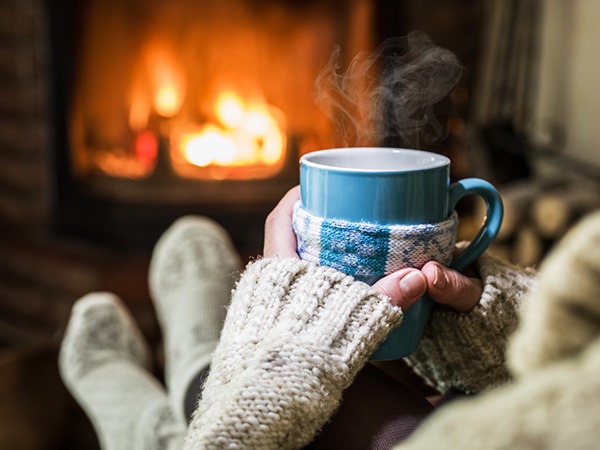5 Steps to a Safer Fireplace

Warming and relaxing near fireplace with a cup of hot drink.
A crackling blaze brightens any dreary cold day. But if a fireplace or a wood-burning stove is not cared for properly, it can expel excessive smoke containing toxins such as combustible tar (creosote) and carbon monoxide, as well as carcinogens like formaldehyde. That’s why kids who are regularly exposed to wood smoke are more likely to have a chronic cough, wheezing, and asthma, says Parents advisor Philip J. Landrigan, M.D., coauthor of the new book Children & Environmental Toxins. But don’t swear off fireplaces for good! You can still enjoy yours safely with this advice.
Air out your house
This is an easy way to eliminate indoor air pollution and improve air quality. Regular use of a fireplace or woodstove may dry the air in a home, resulting in stale air and dust. Once a week, on a bright, clear day with light wind, open all the blinds and windows and let the air blow through your house for an hour or two. Make this a year-round habit—even during the warmer months when you’re not using the fireplace—to detox your space of other common pollutants produced by cleaning products, candles, and cooking.
Watch that ash pile
It’s fine to have 2 or 3 inches of ash on the firebox floor, but any more than that may push the logs forward and cause fire, sparks, or smoke to billow out into the room. Even when you’re not using the fireplace, having too much ash can also trap moisture and create a damp, attractive home for insects. Use a shovel to remove ash, and either toss it into a noncombustible garbage can with a sealable lid or throw it into your compost pile. (Fun fact: Ash makes great fertilizer—especially for rose bushes!)
Burn the right stuff
To help reduce built-up soot, ash, and creosote, use only dry, well-seasoned firewood. Steer clear of green or wet wood, which can cause too much smoke, excessive creosote, and dangerous chimney fires. If you split your own firewood (go you!), cover the top of the pile and store it in a dry spot for at least nine months before burning. While it’s tempting to use your fireplace as a makeshift disposal, resist the urge: When burned, wrapping paper and plastic release chemicals that harm us and our planet. The same goes for cardboard and that Christmas tree that you’re finally ready to part with: Both are highly combustible and greatly increase your risk of a chimney or house fire. Take them outside and to the curb.
Manage your carbon monoxide
Fires in a wood stove or a fireplace can give off deadly carbon monoxide. In well insulated homes, cracking open a window when you light a fire can help. Make sure a fire is out before closing the damper, leaving the house, or going to bed (though it’s okay to walk away from an ember or two). Avoid dousing flames with water, which may fill your room with smoke or damage your fireplace. Also, make a point of checking the batteries in your carbon monoxide detectors twice a year when you change your clocks, so you’re less likely to forget.
Get a yearly fireplace inspection
Any fireplace or stove, regardless of its fuel source, needs a yearly inspection and cleaning if it has a chimney or a vent. A certified chimney sweep will check for nests or other blockages you can’t see and evaluate the condition of the chimney and appliance. If you have a wood-burning fireplace, the chimney sweep can remove any flammable tar and creosote that tend to collect on chimney walls after frequent use. Visit Chimney Safety Institute of America to find a certified chimney sweep near you and for more info on the level of inspection you need depending on the type of fireplace you own.
Your friends at Apollo Insurance Services want you to snuggle up and enjoy the coziness and warmth of your fireplace safely.
